Here’s a guide to recognizing aphid infestations and how to get rid of aphids naturally.
All gardeners eventually battle aphids in the home garden. Aphids on Houseplants can also be a problem.
Are Aphids Harmful to Plants? Aphids suck juices from plant leaves and stems. Small infestations will not harm the plant but you will see the damage. Aphids can reduce plant size, foliage growth and fruiting abilities if the infestation is long standing.
What Causes Aphids? Aphids are caused by several factors:
- Herder Ants bring Aphids to Plants. We discuss herder ants and aphids further in this article.
- Plants that are stressed by poor management will eventually fall prey to Aphids.
- Overcrowded plants draw aphids.
- Drought causes aphids to seek plant nectar.
- Poor soil and poor plant nutrition.
- Aphids are highly attracted to certain plants. We discuss how to use plants like these as decoys to protect more valued plants in your collection.
For this article we cover How to recognize aphids and aphid damage. We discuss strategies on how to kill and control these pests.
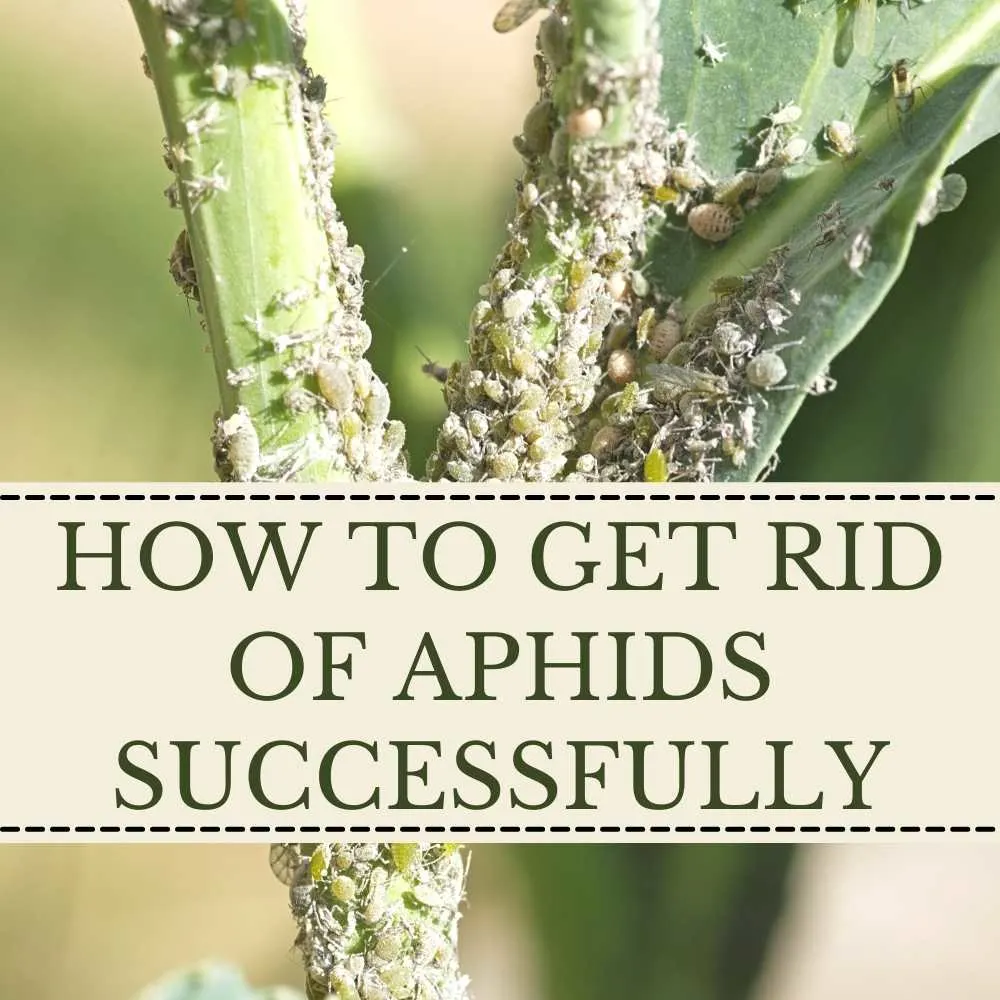
Our homemade spray kills aphids and other pesky pests like spider mites, thrips and other common plant pests.
The recipe is in our how to card at the bottom of this post. If that’s what you’re here for. Click the jump to how to card button at the top of this post to avoid lengthy scrolling. 🙂
FYI: Fungus gnats on houseplants cannot be eliminated with these methods and products. Read our post on how to kill fungus gnats (and why you should) to control these disease spreading bugs.
Should you Kill Aphids?
Aphids do not usually kill plants. However, if the plant is seriously infested aphids can destroy and injure blooms and leaves. In your indoor plants, ornamental or vegetable garden aphid control is necessary for optimal growth and beauty of plants.
- Aphids are sap suckers. They take the nectar from plant stems and leaves.
- This diminishes the plant energy and its ability to grow and support its fruit.
- In a serious long term infestation the plant is stunted and so are the leaves.
- Aphids often carry virus that are transferred to the plants they attack.
- Aphids come in a myriad of species and attack a huge variety of house and garden plants.
What Are Signs Of Aphids?
Aphids are small, soft bodied pests. Large colonies are evident when they cluster on leaf stems. Aphids leave sticky honeydew and black sooty mold on plant leaves. Aphid damaged Leaves curl, shrivel and turn yellow.
The pictures below show the common types of leaf damage aphids do. And what aphids look like.
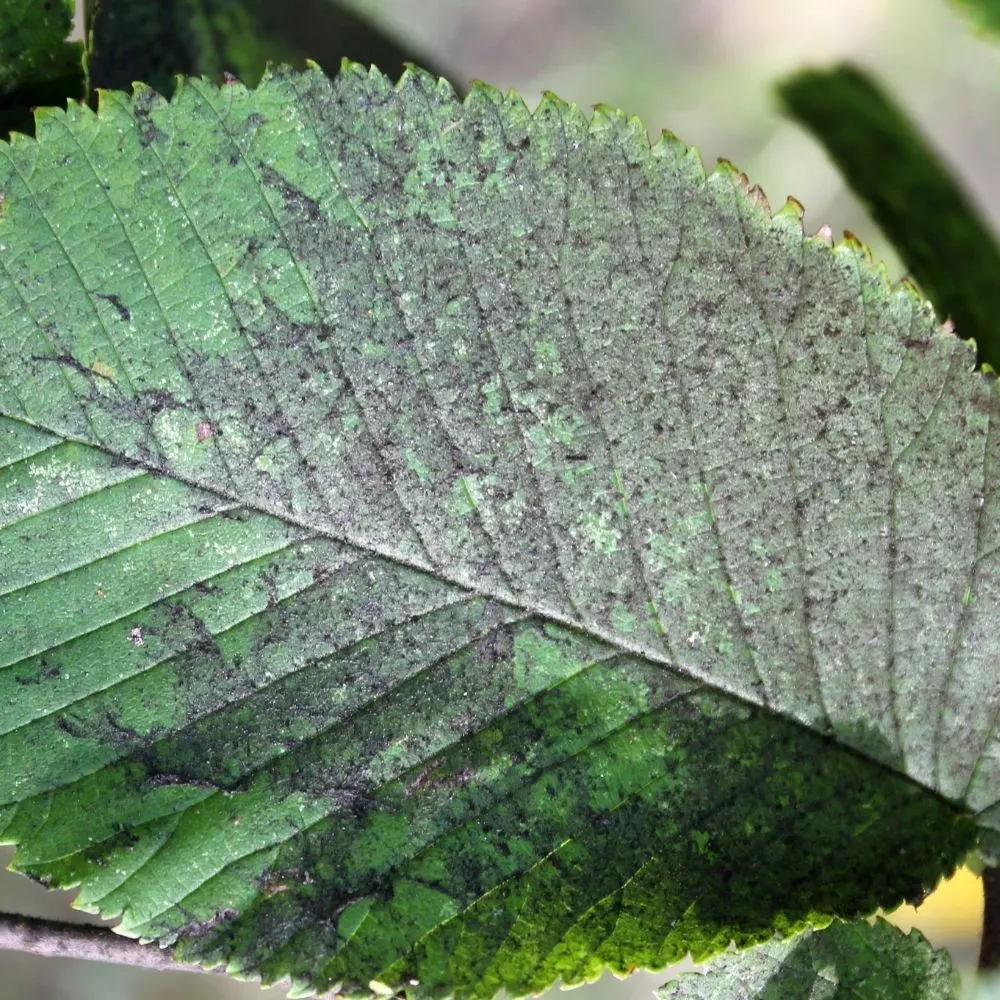
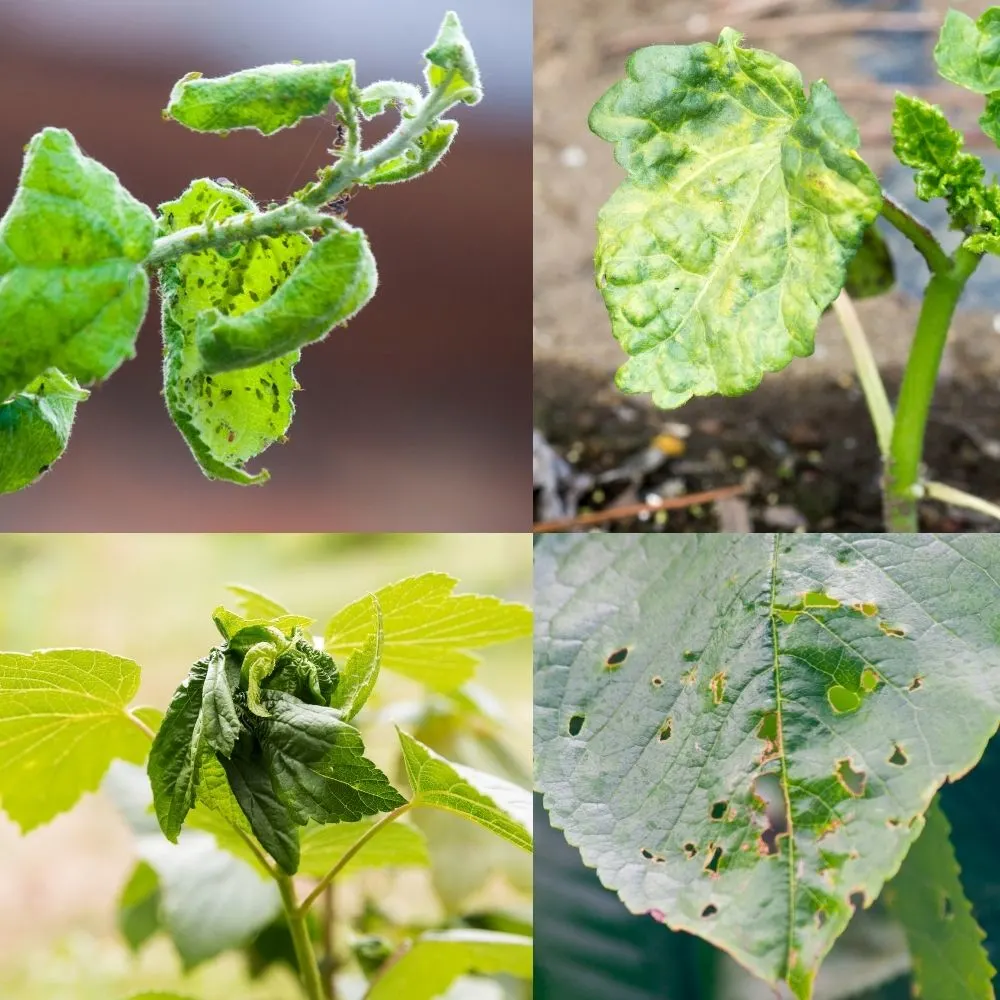
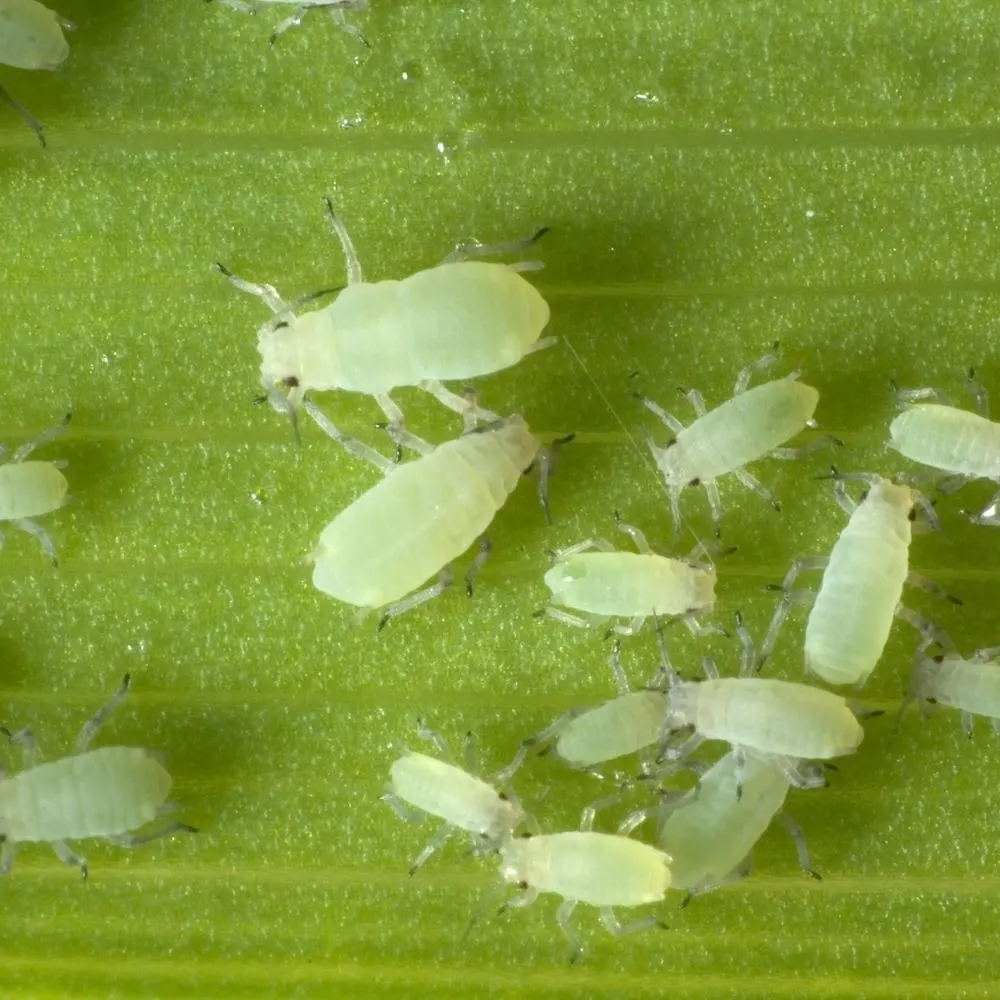
The first part of learning How to Get Rid of Aphids is learning what they look like. And what the damage they cause also looks like.
Get a small hand held magnifier and look for the source of the plant damage.
Check the UNDERSIDES of leaves. Also look at buds and plant stem intersections.
Signs that your plant damage is from aphids.
- You may spot a mass of teeny aphids clumped up the plant stem just under the new leaf whorls (Aphids can be green, grey or black).
- The underside of the leaf, or running up the stem under the leaf, may have aphids or aphid eggs on it. They will be clumps of tiny white rice shaped objects.
- Once the eggs hatch out into nymphs you will find white flecks on the leaves. These are nymph castings.
- Watch for the castings every couple of weeks as the aphid lifecycle continues. The next generation will hatch and you will suddenly see LOTS more nymph castings.
- Also some shiny sticky aphid honeydew substance might be on the leaves. That’s what ants are interested in.
- Twisted, stunted, curled and sucked leaves.
- Sooty mold goes with Aphids too.
Herder Ants Farm Aphids:
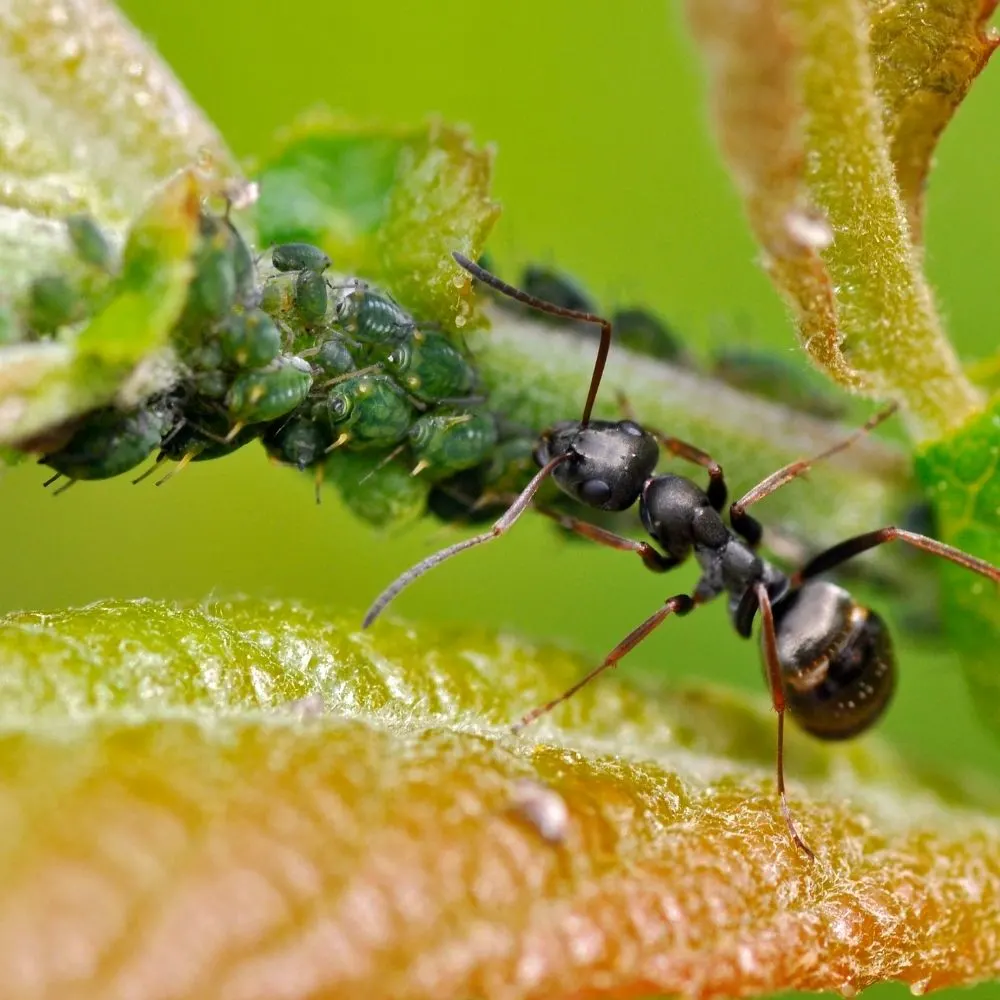
Some ants protect and herd aphids like cattle for the honeydew nectar aphids produce.
Kids and Pets Safe Ant Killer:
Using Chemicals for aphid control can harm Kids, Pets, You and the Ecosystem. Here are some reliable organic methods for controlling Herder Ants.
Cornmeal:
- Cornmeal is bad for ant digestion. It will kill ants. Scout Ants take cornmeal back to the queen and hopefully the hill dies off with her.
- Cornmeal will not harm small kids or pets.
- Spread cornmeal along ant trails or near ant hills. This will take some time to work.
Diatomaceous Earth:
- Look for food grade diatomaceous earth. It cuts up the ant exoskeleton. Safe for kids and pets.
- Sprinkle some around any entrance point or ant hills you’ve located to get the job done.
- Non-food grade diatomaceous earth is harmful to breathe so stick with food grade..
- Diatomaceous earth dehydrates and kills the ants. Unfortunately it does not stick to them so it won’t kill the queen.
- To kill a whole ant hill you will have to find the hill, open it and pour the diatomaceous earth right into it.
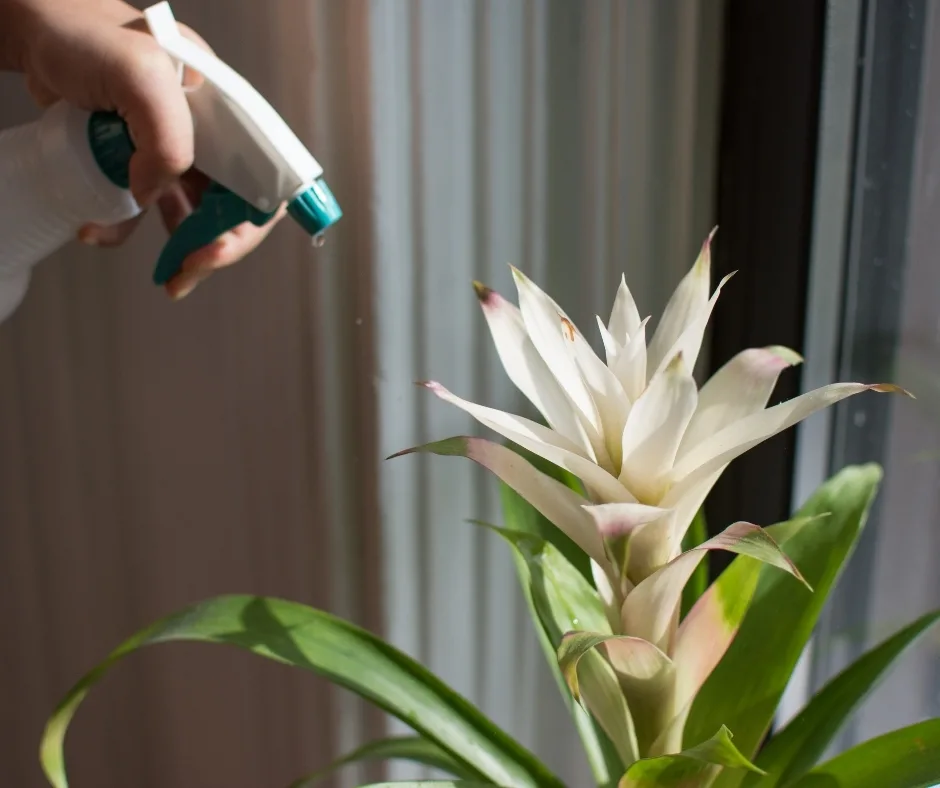
How to Kill Aphids:
TIP: Once you spot pests or the damage they do on your plant, take control.
Remember, organic gardening is all about balance. Aphids only do a lot of damage when there are a LOT OF THEM.
How to Get Rid of Aphids on plants:
- Strong water spray will wash Aphid populations off your plant leaves and may be enough for a small infestation.
- Snip off heavily affected plant parts and remove the worst of the pests.
- Directly Spray aphids with our DIY Organic Insecticidal Soap with liquid dish soap. The Printable card at the post bottom.
- Pick them off with an alcohol-soaked cotton swab or wipe them off with baby wipes.
- Squishing aphids and scale with soapy fingers is another quick removal method (gross but it works).
- Isolate infected plants as much as possible. Remove a heavily infested plant if you must.
- Try essential oils. We add some suggestions for oils in our homemade aphid soap recipe below.
- For houseplants spraying may not be ideal. You can choose to wash each leaf of your plants top and bottom if that works best for you. Use a soft cloth or paper towel.
Beneficial Insects:
Good allies in the aphid wars. Ladybugs in both the larval and adult stage eat about 5,000 aphids in their one year lifetime.
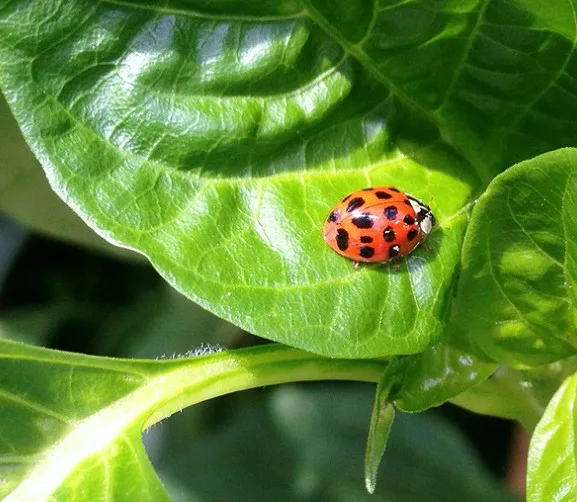
- Import and support Beneficial bugs. Certain wasps, Green Lacewing Larvae and good old lady bugs will eat lots of Aphids.
- Spiders are encouraged in our greenhouse because they eat aphids and mites too. (we have no toxic spiders here. 🙂
Here is an Amazon page of Beneficial Insects to purchase that your garden will love.
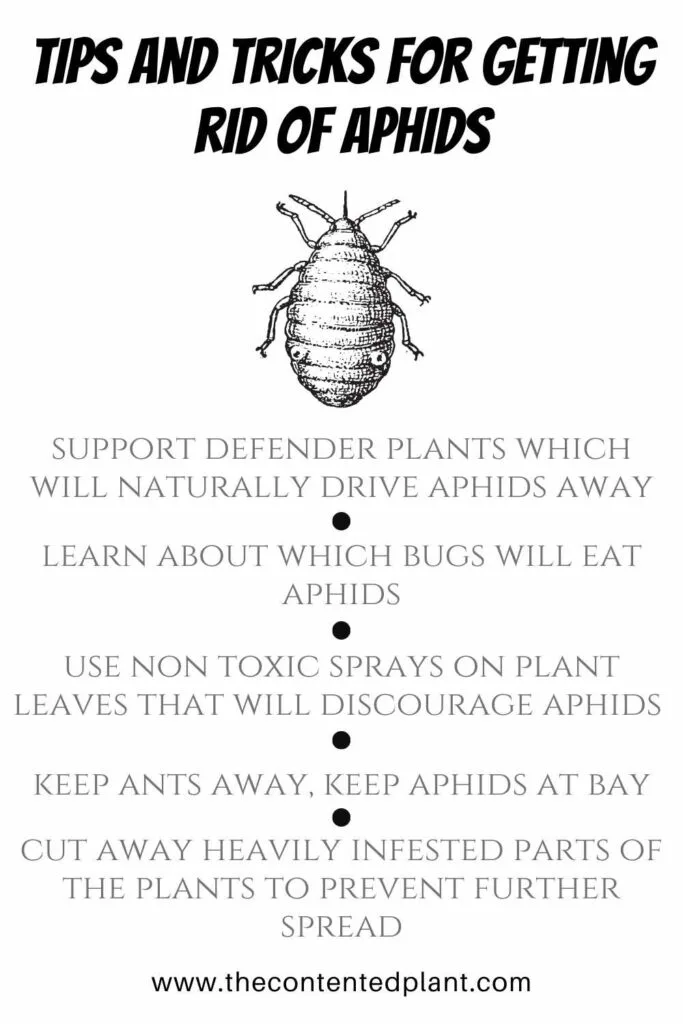
Companion planting:

This is a wonderful way to beautify your garden and greenhouse. And naturally provide some control of aphids.
Deterrent Plants-Plant the Drive Aphids Away:
Aphids are deterred by some plants. Deterrent Plants have properties that drive aphids away. Plant them as companions or in groups around your more vulnerable plants.
Plant these defender plants in amongst your plants that are susceptible to aphids.
Trap plants:
Aphids are drawn to certain plants. We can use these plants as decoy or trap plants.
Plant trap plants as decoys for aphids to draw these pests away from your valued crops. Keep them close to but not NEXT to the plants you are trying to protect.
| Plants that Aphids Hate: | Plants that Aphids Love: |
| Place these plants CLOSE to crops Aphids often attack. | Place these plant AWAY from your high value crops. |
| Rosemary | Nasturtiums |
| Thyme | marigolds |
| Garlic | Alyssum |
| Chives | Daisy |
| Leeks | Sunflowers |
| Fennel | Roses |
| Dill | -Many more decoy plants are probably available to you in your garden zone. |
| Cilantro | -Find local plants aphids are drawn to use them to attract aphids |
| Catnip | -Any Plant aphids love should be placed away from crops you are trying to defend |
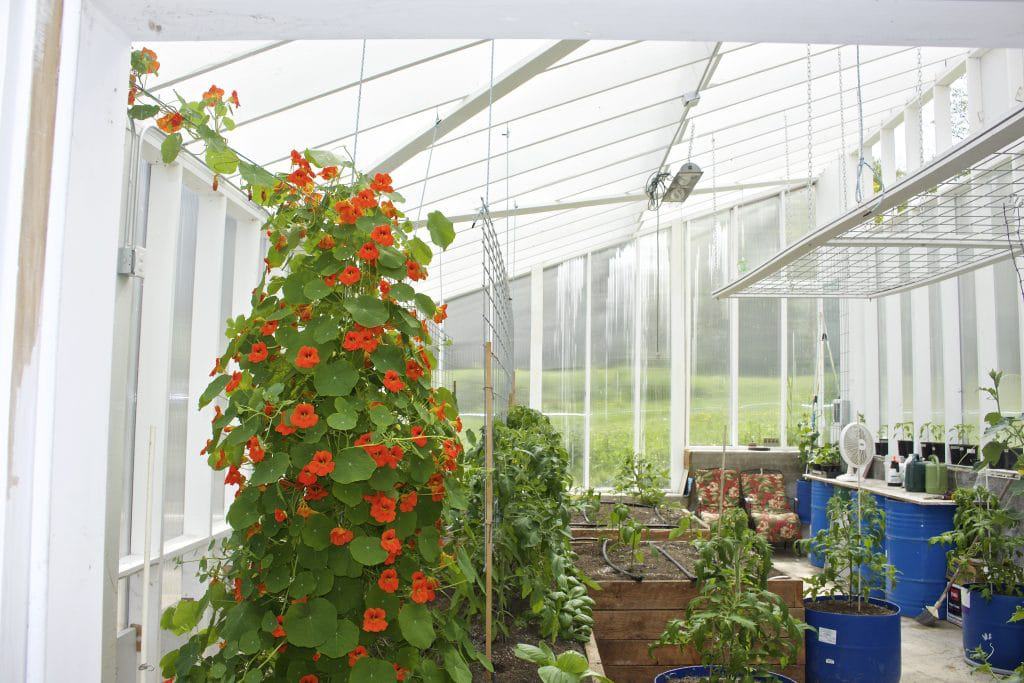
What To Spray On Aphids:
Sprays are effective for a large infestation outdoors, or to control aphids on your indoor plants. These sprays are Non toxic and will work to kill and deter aphid populations.
Non Toxic Aphid Sprays:
- Our Homemade Aphid Spray works well with tough indoor vines like Pothos, and tender fussy houseplants like Calatheas. It is also effective on all other Houseplants and outdoor plants. It just Requires a one quart spray bottle.
- Neem oil. Neem oil aphid treatment is safe for home and garden. We use it in our homemade spray. It’s very safe.
- Trifecta Spray is also natural and available on Amazon.
Essential Oil Sprays:
Several Essential oil will kill or deter Aphids. Mix 4 drops of any mix of these oils into one quart of our homemade insecticidal soap recipe. Or just water if you don’t have the correct soap on hand. Add Neem oil as directed for even more effectiveness as a aphid spray.
Essential Oils That Kill Or Deter Aphids:
- lavender oil
- coriander oil
- juniper oil
- peppermint oil
- fennel oil
- clove oil
- orange oil
- oregano oil
- Banana oil (if you can find it)
Your Printable Insecticide Recipe:
Homemade Insecticidal Soap Recipe
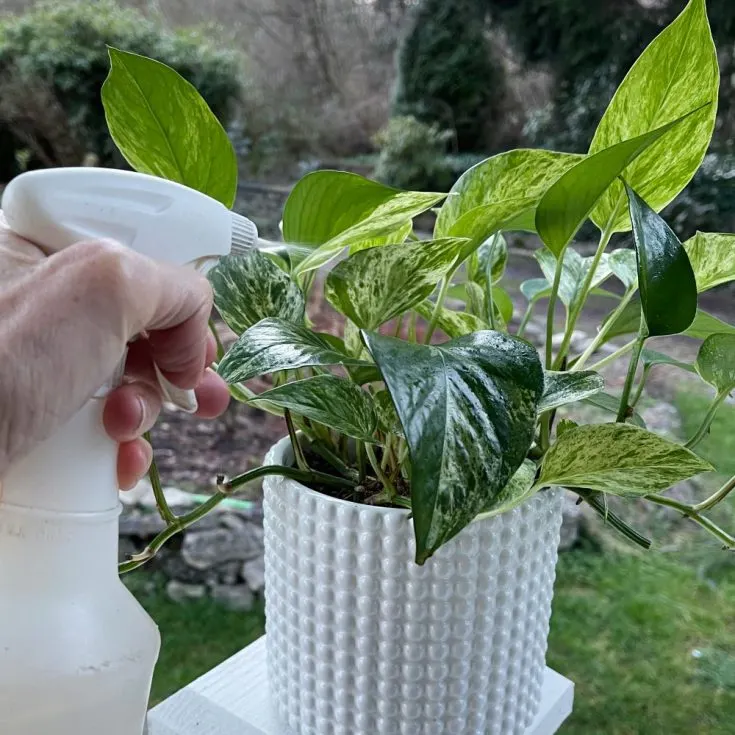
This Insecticidal soap Spray Recipe with Neem oil is effective for spider mites, thrips, and soft-bodied insects on plants, such as aphids, young scales, whiteflies and mealybugs. Only a deterrent to caterpillars and beetle larvae but this recipe will control boxelder bugs when they are still in the small nymph stages.
Materials
- 1/2 Teaspoon pure Castile liquid dish soap (or other organic liquid soap)
- 1 Tsp. Neem Oil
- 1 quart water-soft or average hard water for best results.
- OPTIONAL:
- A few added drops of these essential lavender oil, peppermint oil, or orange oil, clove oil, fennel oil, coriander oil, juniper oil, oregano oil will further deter aphids.
Instructions
- mix the water and soap into a solution. Do NOT shake as it will cause lots of bubbles.
- Pour solution into the spray bottle.
- spray on the affected plant leaves on the top and bottom.
- Also spray stems, intersections and buds of flowers.
- Leave the solution on the plants overnight.
- Spray the plants with water after 12 hours of so to rinse the leaves and remove dead aphids.
- Reapply as needed. To interrupt the aphid life cycle spray every three days for two weeks.
Although the basic recipe will work as described you may wish to enhance your formula by adding
A few added drops of lavender, peppermint, or orange oil in this recipe will help repel pests and smells great!
Notes
Sensitivity of Plants:
If you find this recipe is too harsh and burns your plants. Cut the soap amount in half or follow this spray with an immediate spray of plain water to protect your plant leaves. Also sensitive plants like ferns, succulents, azaleas and waxy leaved plants may be harmed by this spray.
Water Hardness matters:
This recipe is most effective with average to soft water. A hard water will yield a less effective insecticidal spray recipe and can leave soap scum on your plant leaves.
How to use this Spray:
- DIY Organic Insecticidal Soap Recipe works on contact which means it must coat the insect to kill it.
- This spray has No residual effect and must be applied several times at weekly intervals for best control. Although neem oil has some lasting impact on insects most of the effectiveness of this spray is by direct contact.
- Spray the entire plant with special focus on those areas of your plant where you can find the bugs.
- Spray in the morning or evening in cooler temperatures and when plants are shaded. You want the spray to last. Once it dries the spray is ineffective.
Go to our Homemade Food Junkie article For more on this recipe
The cost of this recipe is determined by which soap you use and if you have to purchase a spray bottle.
This insecticidal soap is not effective on fungus gnats. Read this article on how to kill and manage Fungus Gnats
More From The Contented Plant:
We continually add articles on houseplants and Gardening and plant problems and fixes for your enjoyment and information. Here’s a few to get you started.


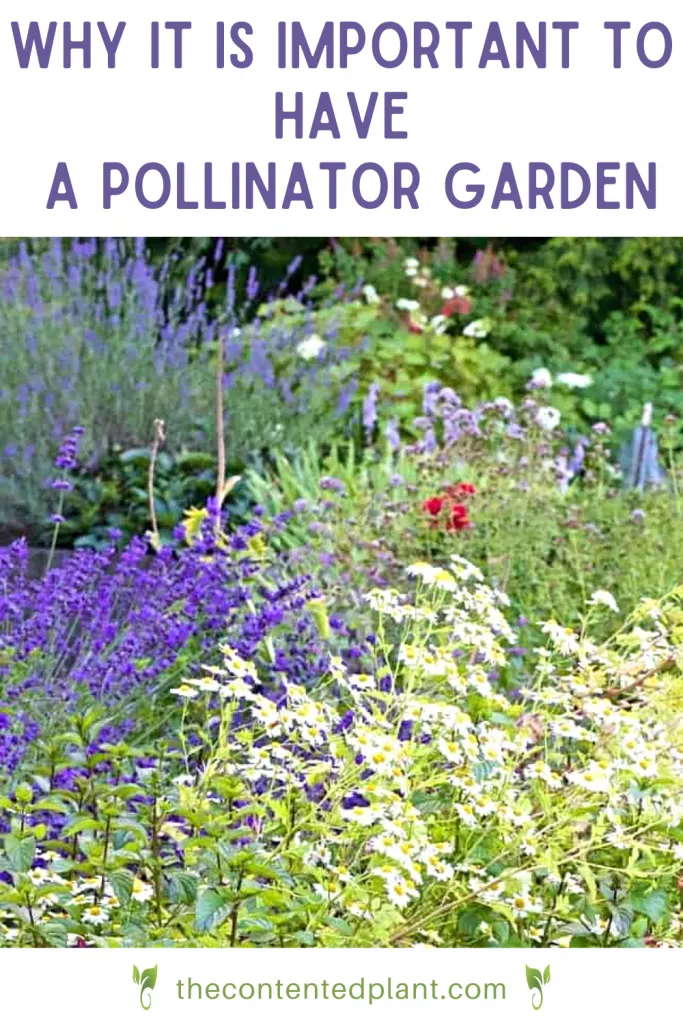
Follow Us:
Find us on YouTube, Instagram , Pinterest and TikTok! We love to Plant chat. We also comment, like and occasionally share your content to our daily stories. We’d love to see your plants. Share your joy in your houseplants. Happy Planting!
- 5 Fantastic Cactus Species for Your Home
- Pygmy Date Palm Trees
- Bromeliad Care Guide and Profile
- Growing Gloxinia Plants in Your Home
- Staghorn Ferns Care and Maintenance
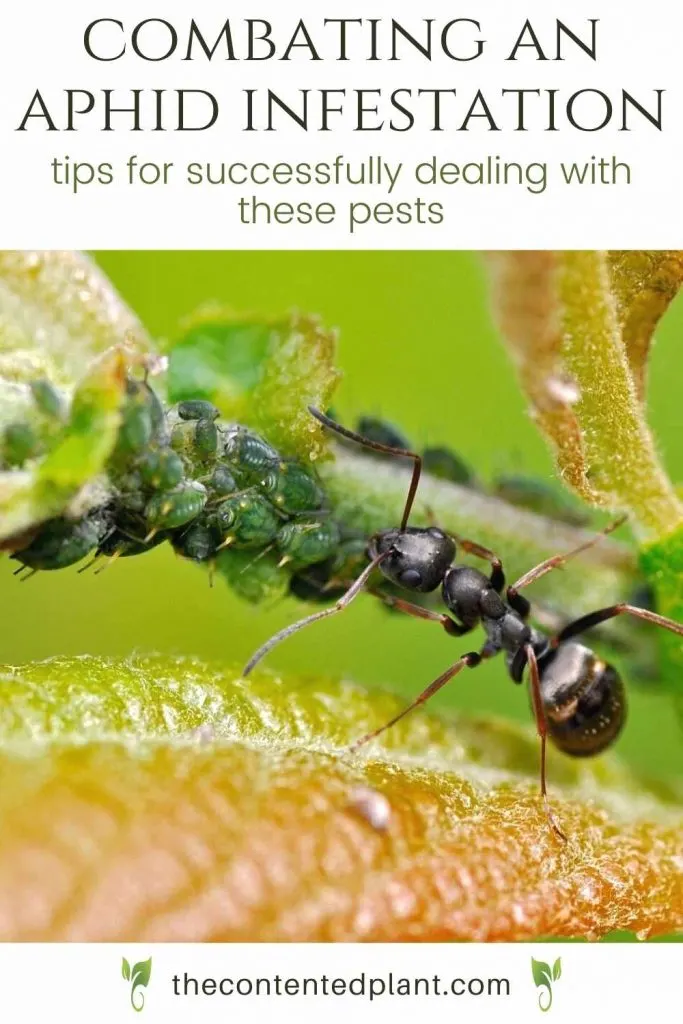
Resources:
- Get more ideas on how to deter ants organically here.
- Here is a Key to Identifying Aphids.
- Learn more about beneficial insects in this informative article by thoughtco.com.
- Homemade Food Junkie Insecticidal Recipe

How to Get Rid of Powdery Mildew on Plants-Treatment Guide - The Contented Plant
Saturday 29th of October 2022
[…] How to get rid of Aphids […]
Leca For Plants- Which Plants Thrive in LECA? - The Contented Plant
Saturday 10th of September 2022
[…] you have trouble with root rot, yellowing leaves, or aphids or fungus gnats? If so, you may benefit from Growing in Leca. It will help you out since it is a […]
How to Use Hydrogen Peroxide For plants - The Contented Plant
Saturday 10th of September 2022
[…] help kill pests on the plant leaves like Aphids, spider mites and other sapsuckers use the misting solution […]
Scale on Plants-Identification and Eradication - The Contented Plant
Friday 2nd of September 2022
[…] a Colony of white Scale can look like mealy bugs at a glance. Mealy bugs however, are mobile and can be treated like aphids. […]
How to get Rid of Whiteflies on Plants - The Contented Plant
Tuesday 9th of August 2022
[…] common garden, greenhouse and houseplant pests. These plant sucking insects are closely related to aphids, mealybugs and scale. Learn How to get rid of whiteflies in this […]